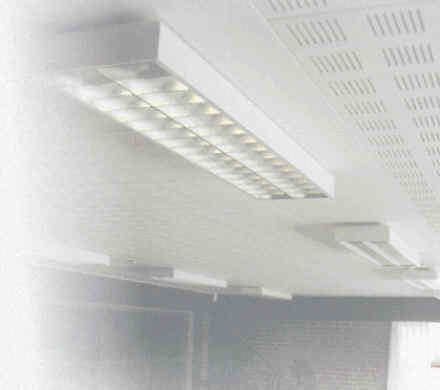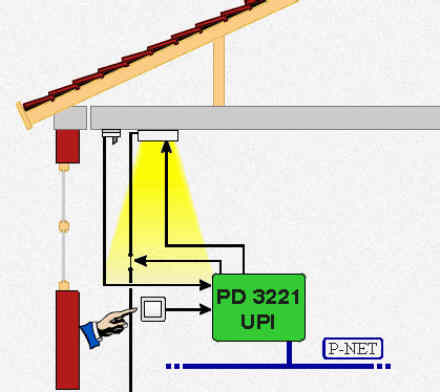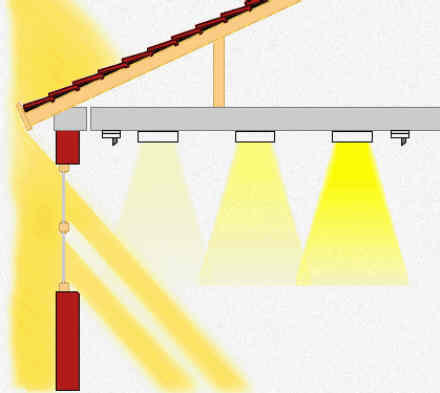


 |
 |
 |
|
|
|
|
||||
| Lightning |
| The lighting sub-systems throughout the building consist mainly of one or more fluorescent tubes and a light sensor. Light is regulated in an attempt to keep a constant light intensity in a room. Thus, the light fitments in each room are adjusted using the basis of a setpoint and the input from the light sensor. Furthermore, the room lighting can be turned on and off by a tip switch connected to the UPI module, which also controls the sensor and fitments. The lamps are dimmed or brightened using an analogue potential, ranging from 0 to 10 volts. The control voltage is generated using a 1 kHz duty-cycle output from the UPI. |
 |
| In the larger offices there are three rows of lights, and two light sensors, which are located on either side of the rows. Again, a constant light intensity in the room is aimed for. The two outer rows of lights are adjusted in accordance with each of the coherent light sensor measurements, and the central row adjusts to an average value of the other two. When strong daylight enters through the windows, this normally leads to a lower light intensity in the row close to the window, and the other rows produce a controlled light gradient towards the shaded areas of the room. |
 |
|||||
| All inputs and outputs are connected to a UPI module having a combined calculator and pulse-processor program installed, which internally carries out the required regulation. Setpoints are uploaded from elsewhere, via P-NET. |
 |
|||||
|
|
|
|
||||
|
|
International P-NET User Organization
P.O. Box 192DK-8600 Silkeborg Denmark |
 Send us an e-mail |